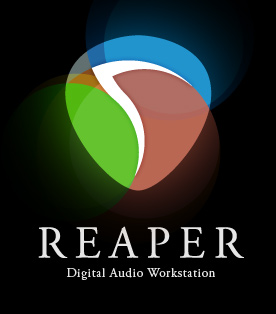This article needs additional citations for verification .(October 2019) |
Logic Control is a control surface originally designed by Emagic in cooperation with Mackie.
This article needs additional citations for verification .(October 2019) |
Logic Control is a control surface originally designed by Emagic in cooperation with Mackie.
Logic Control was designed by Emagic as a dedicated control surface for their Logic digital audio workstation software. It was manufactured by Mackie, but distributed by Emagic.
About 6 months later, Mackie introduced a physically identical product called "Mackie Control" which included support for most major DAW applications, but not Logic. The Emagic Logic Control was still available and would only work with Logic.
Later, Mackie Control's firmware was revised to include compatibility with Logic, combining together Mackie Control, Logic Control and Human User Interface (HUI) into a single protocol. [1] As a result, the name was changed to "Mackie Control Universal" (MCU). Out of the box, MCU included Lexan overlays with different button legends to support control of other DAWs such as Pro Tools and Cubase.
Logic Control (and now MCU) allows control of almost all Logic parameters with hardware faders, buttons and "V-Pots" (rotary knobs). Its touch-sensitive, motorized faders react to track automation. All transport functions and wheel scrubbing are also available. The unit also controls plug-in parameters. Visual feedback including current parameters being edited, parameter values, project location (SMPTE time code or bars/beats/divisions/ticks) are conveyed by a two-line LCD and red 7-segment LED displays.

Virtual Studio Technology (VST) is an audio plug-in software interface that integrates software synthesizers and effects units into digital audio workstations. VST and similar technologies use digital signal processing to simulate traditional recording studio hardware in software. Thousands of plugins exist, both commercial and freeware, and many audio applications support VST under license from its creator, Steinberg.

Pro Tools is a digital audio workstation (DAW) developed and released by Avid Technology for Microsoft Windows and macOS. It is used for music creation and production, sound for picture and, more generally, sound recording, editing, and mastering processes.

GarageBand is a software application by Apple for macOS, iPadOS, and iOS devices that allows users to create music or podcasts. It is a lighter, amateur-oriented offshoot of Logic Pro. GarageBand was originally released for macOS in 2004 and brought to iOS in 2011. The app's music and podcast creation system enables users to create multiple tracks with software synthesizer presets, pre-made and user-created loops, an array of various effects, and voice recordings.

A digital audio workstation is an electronic device or application software used for recording, editing and producing audio files. DAWs come in a wide variety of configurations from a single software program on a laptop, to an integrated stand-alone unit, all the way to a highly complex configuration of numerous components controlled by a central computer. Regardless of configuration, modern DAWs have a central interface that allows the user to alter and mix multiple recordings and tracks into a final produced piece.

Soundtrack Pro is a discontinued music composing and audio editing application made by Apple Inc. It included a collection of just over 5,000 royalty free professional instrument loops and sound effects for use. The software was featured in the Logic Studio and Final Cut Studio software bundles; It was discontinued with the release of Final Cut Pro X, Motion 5, and Compressor 4.

In the domain of digital audio, a control surface is a human interface device (HID) which allows the user to control a digital audio workstation or other digital audio application. Generally, a control surface will contain one or more controls that can be assigned to parameters in the software, allowing tactile control of the software. As digital audio software is complex and can play any number of functions in the audio chain, control surfaces can be used to control many aspects of music production, including virtual instruments, samplers, signal processors, mixers, DJ software, and music sequencers.
Emagic was a music software and hardware company based in Rellingen, Germany and a satellite office in Grass Valley, California. On July 1, 2002 Emagic was bought by Apple Computer. Emagic's Windows-based product offerings were discontinued on September 30, 2002.

Novation Digital Music Systems Ltd. is a British musical equipment manufacturer, founded in 1992 by Ian Jannaway and Mark Thompson as Novation Electronic Music Systems. Today the company specializes in MIDI controllers with and without keyboards, both analog and virtual analog performance synthesizers, grid-based performance controllers, and audio interfaces. At present, Novation products are primarily manufactured in China.
Solid State Logic Ltd. (SSL) is a British company based in Begbroke, Oxfordshire, England that designs and markets audio mixing consoles, signal processors, and other audio technologies for the post-production, video production, broadcast, sound reinforcement and music recording industries. SSL employs over 160 people worldwide and has regional offices in Los Angeles, Milan, New York City, Paris, and Tokyo, with additional support provided by an international network of distributors. Solid State Logic is part of the Audiotonix Group.
Logic Pro is a proprietary digital audio workstation (DAW) and MIDI sequencer software application for the macOS platform developed by Apple Inc. It was originally created in the early 1990s as Notator Logic, or Logic, by German software developer C-Lab which later went by Emagic. Apple acquired Emagic in 2002 and renamed Logic to Logic Pro. It was the second most popular DAW – after Ableton Live – according to a survey conducted in 2015.

Waveform, previously known as Tracktion, is a digital audio workstation for recording and editing audio and MIDI. The software is cross-platform, and runs on Apple macOS, Microsoft Windows, and Linux.

REAPER is a digital audio workstation, MIDI sequencer and video editing software application created by Cockos. The current version is available for Microsoft Windows, macOS, and Linux. REAPER acts as a host to most industry-standard plug-in formats and can import all commonly used media formats, including video. REAPER and its included plug-ins are available in 32-bit and 64-bit format.
Euphonix was a professional audio company located in Mountain View, California, United States. Euphonix produced the first successful line of large digitally controlled analog audio mixing consoles in the late 1980s and has since moved on to all-digital systems. In 2010, it was acquired by Avid.
Human User Interface Protocol is a proprietary MIDI communications protocol for interfacing between a hardware audio control surface and digital audio workstation (DAW) software. It was first created by Mackie and Digidesign in 1997 for use with Pro Tools, and is now part of the Mackie Control Universal (MCU) protocol.
VENUE is a brand of live sound digital mixing consoles introduced by Digidesign in February 2005. The family now includes 5 different consoles and a number of ways they can be configured. They can all be connected to Pro Tools, the audio editing software also created by Avid/Digidesign, to provide recording and 'Virtual Soundcheck' facilities. One of the system's key marketing points is its use of the same AAX DSP/TDM plugins as Pro Tools, an industry standard digital audio workstation (DAW). This is designed to enable the sounds recorded by the artist in the studio to be easily recreated on stage, and to allow for greater flexibility in signal processing without heavy and mechanical-shock-sensitive racks of external processors. There is also a PC-based offline editor for creation and editing of show files, although there is no audio processing in the editor.

Logic Studio is a discontinued professional music production suite by Apple Inc. The first version of Logic Studio was unveiled on September 12, 2007. It claims to be the largest collection of modeled instruments, sampler instruments, effect plug-ins, and audio loops ever put in a single application.

MainStage is a music application developed by Apple Inc. designed for use in live performance.
The Soundscape R.Ed (1997–2001) was the second generation digital audio workstation manufactured by Soundscape Digital Technology Ltd. It was renamed the Soundscape 32 after Mackie acquired the product and continued to be available until around 2007.

MAGIX Samplitude/ Sequoia is a computer program made by MAGIX for recording, editing, mixing, mastering and outputting audio. The first version was released in 1992 for the Amiga and three years later for Microsoft Windows. The latest versions of the software are Samplitude Pro X5, Samplitude Pro X8 Suite and Sequoia 17. Samplitude is an example of a digital audio workstation (DAW).

Studio One is a digital audio workstation (DAW) application, used to create, record, mix and master music and other audio, with functionality also available for video. Initially developed as a successor to the KRISTAL Audio Engine, it was acquired by PreSonus and first released in 2009 for macOS and Microsoft Windows. PreSonus and Studio One were then acquired by Fender in 2021.